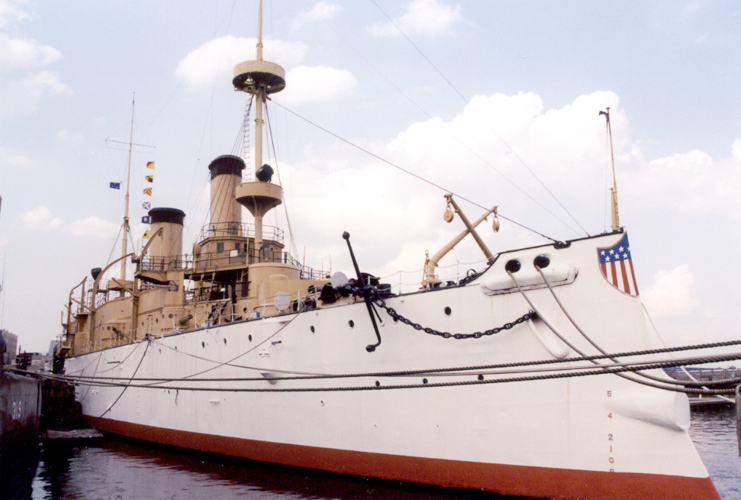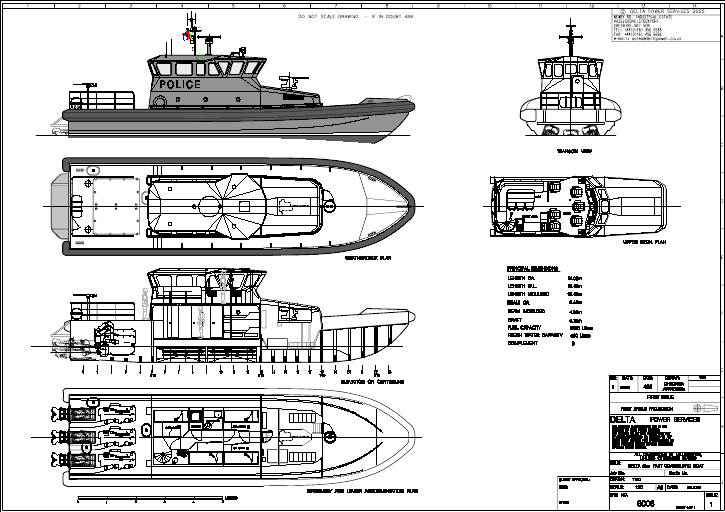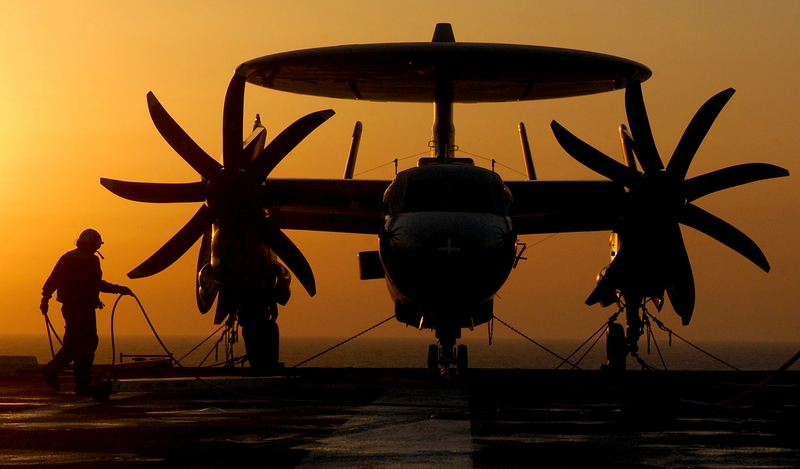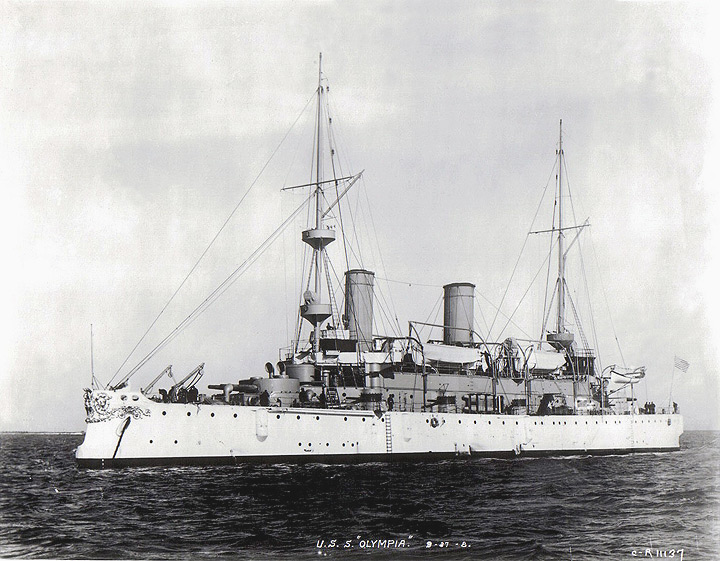
Welcome to MSW’s Scuttlebutt! Here’s the news for the day.

On Display – IJN Shikinami
Crew-mate Alec Cap (bigal07) shares a gallery of images of his build of Tamiya models Fubuki class destroyer IJN Shikinami in this "On Display" feature.

USS Olympia seeks a new caretaker
Source: Philadelphia Inquirer
During the Spanish-American War, Navy Commodore George Dewey stood on the bridge of the ship and uttered the words that became famous: "You may fire when you are ready, Gridley."
The vessel's mighty guns fired the first shots of the Battle of Manila Bay on May 1, 1898, announcing the United States as an international power.

The USS Olympia was the Navy's state-of-the-art flagship, a source of pride for a country flexing its muscles.
More than a century later, this last surviving vessel of the Spanish-American War fleet and longtime Penn's Landing attraction is looking for a new home and benefactor with deep pockets.
Its owner, the Independence Seaport Museum, can no longer afford the upkeep and it told the Navy it "will relinquish its stewardship of this national naval treasure and its valuable artifact collections," said Peter McCausland, chairman of the museum's Board of Port Wardens.
The museum seeks an owner who can pay up to $30 million to tow, restore, interpret, and endow the bedraggled-looking vessel.
Small portions of the Olympia's half-inch steel hull along the water line have corroded to the point that only an eighth of an inch of thickness is left.
The hull must be continually monitored and is often patched, even as water leaks through parts of the deck into the interior, causing further rust.
"We don't like to see the ship go, but you don't want to sink the entire museum because of the cost of maintaining" the Olympia, said the Independence Seaport's interim president, James McLane. "The museum is very financially sound, but if you put a drag on it, that puts it at risk over the next several years."
For more than 13 years, the museum has been "a good steward" of the Olympia, McCausland said. "We've spent $5.3 million on her. We love her."
But efforts to find funding from private donors and the city, state, and federal governments have failed, he said. The attraction will close in September.
"She's not in imminent danger of sinking, but not far away from sinking," McCausland said. "We could have a situation develop and then proceed downhill quite rapidly."
Some sections of the hull "are exposed to air and water, air and water" as the tide rises and falls, speeding the rusting, said Jesse Lebovics, the museum's manager of historic ships.
"There is a concern for the future. Once deterioration starts, it goes faster and faster," he said. "The rubberized coating [on the deck] is eight years old. Water comes in, and that starts the rusting inside."
The riverbed around ship must be dredged before the Olympia can be towed to drydock for new decking, hull repairs, and painting.
Cost of those basic repairs? At least $10 million.
An additional $20 million would be needed for interpretation to turn it into a first-class tourist attraction and for an endowment to pay for its future needs, museum officials said.
Unfortunately, a feasibility study showed that the museum would be unable to meet those funding needs in this economic climate, officials said.
"If we don't have the resources to take care of the vessel, then someone who does will be better for her," Lebovics said.
Finding an owner "willing and able to preserve and repair" the Olympia is the museum's responsibility, said Glen Clark, deputy program manager for the Navy's Inactive Ships Program in Washington. "The Navy does not own the ship."
But the military has been "concerned about the condition" of the Olympia and it sent a letter to the museum in May asking for plans for drydocking, Clark said. "It's a national historic landmark."
The museum took over the one-of-a-kind ship Jan. 1, 1996, from the Olympia Cruiser Association, which had maintained the vessel with limited resources for 40 years.
The Olympia is the world's oldest floating steel warship. It was used to carry the body of the unknown soldier of World War I from France to the United States in 1921, the museum said.
It was docked at the Philadelphia Navy Yard from 1922 to 1959, and was on display at Pier 11 at the Benjamin Franklin Bridge through the 1960s until 1976, when it was moved to Penn's Landing.
The ship was authorized in 1888 and commissioned in 1895. It led five other U.S. warships into Manila Bay in late April 1898, and fired shots in the battle to wrest the Philippines from the Spanish.
The U.S. fleet - under Dewey's command - destroyed 10 Spanish cruisers and gunboats in a few hours without losing an American life.
Today, the Olympia is a time capsule, filled with a collection of paintings, photographs, and artifacts.
It has been in the water since 1945, though historic steel-hull ships should be drydocked about every 20 years for maintenance. The deferred work makes restoration more costly.
"We will be rolling out our new strategic plan, connecting people in the region to the water," McCausland said. "But we cannot take care of the Olympia and execute our plan.
"We're very saddened by this, but it is what it is. We did our best."
Added McLane: "It's not what the museum wants to do. It's what we have to do."
U.S. Donates Five Patrol Boats to Pakistan's Maritime Security Agency
Source: US Embassy in Pakistan
ISLAMABAD --- The United States government donated five maritime interdiction patrol boats to Pakistan's Maritime Security Agency (MSA) at the Karachi shipyard today, significantly enhancing the agency's coastal interdiction and patrol capabilities.
U.S. Army Brig. Gen. Michael Nagata, U.S. Office of the Defense Representative-Pakistan deputy commander, officially donated the 13-meter (42-foot) Fast Patrol Boats to Rear Admiral Tahseen Ullah Khan, MSA Director General, during a hand-over ceremony in Karachi. The event was attended by Mr. Steve Fakan, U.S. Consul General to Karachi, and more than a dozen U.S. and Pakistani military representatives.

Each of the new vessels are equipped with two 565-horsepower Caterpillar diesel engines that enable them to operate in inclement weather up to 300 nautical miles offshore with a maximum speed of 72+ KPH (45+ MPH). Known as Fast Patrol Boats, they greatly increase the MSA's ability to patrol Pakistan's coastal waters and conduct a wide range of maritime operations.
The U.S. government will donate four more Fast Patrol Boats to the MSA later this year. In total, the nine boats and spare parts are valued at approximately $10 million.
"These patrol boats are a gift from the United States to support Pakistan's Maritime Security Agency to assist them in their critical mission as they protect and serve the people of Pakistan," said Brig. Gen. Nagata. "Whether it's search and rescue, combating smugglers, preventing crime or protecting Pakistan's coastal areas, we hope the increased capabilities these boats provide greatly enhance the MSA's ability to conduct the full spectrum of maritime operations."
During the last three years, U.S. civilian and security assistance to Pakistan has totaled more than $4 billion.
Assistance provided and delivered has included support for medical aid, school refurbishment, bridge and well reconstruction, food distribution, agricultural and education projects, 14 F-16 fighter aircraft, 10 Mi-17 helicopters, more than 450 vehicles for Pakistan's Frontier Corps, hundreds of night vision goggles, day/night scopes, radios, and thousands of protective vests and first-aid items for Pakistan's security forces.
In addition, the U.S. funded and provided training for more than 370 Pakistani military officers in a wide range of leadership and development programs covering topics such as counterterrorism, intelligence, logistics, medical, flight safety, and military law.
Iraq Takes Major Step Toward Securing Coastline
Source: US Army
UMM QASR, Iraq --- As part of the effort by the government of Iraq to increase the stability and international standing of the country, the Iraqi Navy officially welcomed two new ships to its fleet during a ceremony along the country's southern coast Feb. 14.

In 2008, Iraq was the world's 13th-largest oil producer, with 75 percent of the nation's gross domestic product and 86 percent of the government's revenue coming from oil exports.
Eighty-five percent of the Iraqi oil exports go through the ports of Umm Qasr and Basrah, making their security a vital piece of the puzzle when discussing economic and overall stability of the nation.
The primary mission of the two newest ships will be improving the security of the two key ports, officials said.
In a ceremony complete with a demonstration by Iraqi divers and the ritual slaughter of goats for good luck, the Majed 703 and Shomokh 704, both patrol boats purchased from Italy, were christened in the Umm Qasr port before assuming their roles protecting Iraq's ports and coastline.
Lt. Gen. Michael Barbero, the United States Forces-Iraq deputy commanding general for advising and training, said the ships are another step in the right direction for Iraqi stability and for the ports to meet international standards for security.
"This is a great day for the Iraqi Navy; this will help them operate and secure their own oil platforms," Barbero said. "This is another step toward allowing them to be self-sufficient, another step for them to assume their rightful role here."
Even though Iraq only has 35 miles of coastline, Barbero said the direction the nation goes hinges on what happens in its port cities. "This is the lifeblood of Iraq. It is absolutely essential to the future of this country."
Up next for the ships and their crews is a trip across the Atlantic Ocean to Louisiana for additional training and familiarization in preparation for their heavy responsibility.
The Iraqi Navy was almost completely destroyed during the 1991 Gulf War. Nineteen ships were sunk and six were damaged. The Navy was not rebuilt during the 1990s and played no role during the 2003 invasion.

CVW 5 Continues Capability Upgrades with Arrival of New Hawkeye 2000
Source: US Navy
ATSUGI, Japan --- Three new E-2C Hawkeye 2000 aircraft arrived at Naval Air Facility Atsugi, Japan to join Carrier Airborne Early Warning Squadron (VAW) 115 Feb. 28.
The improved E-2C Hawkeye 2000 carries advanced capabilities over its predecessor in the areas of detection, processing, identification, communication and navigation.

Their arrival, along with 24 newer F/A-18E Super Hornets in the past two months, is part of several recent upgrades to Carrier Air Wing (CVW) 5 making it the most powerful and capable airwing in the Western Pacific region and the U.S. Navy.
According to Capt. Ross Myers, commanding officer of CVW 5, this upgrade goes beyond increasing just the battle group's efficiency.
"The capability that the Hawkeye 2000 brings to Carrier Air Wing 5 is more than just the squadron," said Myers. "It brings to the entire air wing capabilities that we have never had before and in a greater scope it brings to the joint security cooperation between the United States and the Government of Japan in defense of Japan and Japanese self defense forces a greater capability and lethality for the strike fighters."
Key among the advances is the cooperative engagement capability upgrade which enables the Hawkeye to serve as the fleet's information hub, fusing and distributing information from sources such as satellite and ship-borne radar. This enhanced technology provides better data links to ships conducting ballistic missile defense operations at sea, expanding the reach of U.S. Navy maritime operations in the 7th Fleet area of responsibility.
VAW 115's maintenance officer and naval flight officer Lt. Cmdr. Bill Selk has worked with the E-2C Hawkeye for over a decade and feels this new upgrade will play a vital role in CVW 5's mission.
"From the outside both airplanes look almost identical, but from the inside it brings a whole new level of capability for us," said Selk. "It has a few new displays and a few new systems that will really enhance our situational awareness and will help us convey that to the battle space."
The Hawkeye 2000's arrival was no surprise to the squadron. According to Cmdr. Chris Martin, VAW 115's commanding officer, the squadron had an ample amount of resources to make the transition a simple one.
"We started about six to eight months ago. We started looking at our training requirements and began planning," Martin said. "Also we have maintenance training teams coming from the U.S. and as well as our fleet replacement squadron to help us transition to the new airplane."
As for the maintainers, the transition shouldn't place too much change in how they handle required maintenance.
"Most of the systems are the same with the exceptions of the electricians and avionics technicians," said Selk. "There will be some new systems for them to learn and I know they are excited to get their hands on them and show us what they can do with them."

Cruiser Olympia
Today’s website is the about the finding of the Cruiser Olympia. Enjoy.
This Day in U.S. Naval History
1911 - The first Naval Appropriations Act that included funds for naval aviation is approved by Congress.
1925 - Congress authorizes restoration of USS Constitution.
1947 - Operation Highjump, air operations in Antarctica, ends.
1963 - A Navy Hercules aircraft completes a 12-day rescue operation of a critically-ill Danish seaman from a Danish freighter off the coast of Antarctica.
Photo of the Day

The USS Olympia in 1908.
Gator











